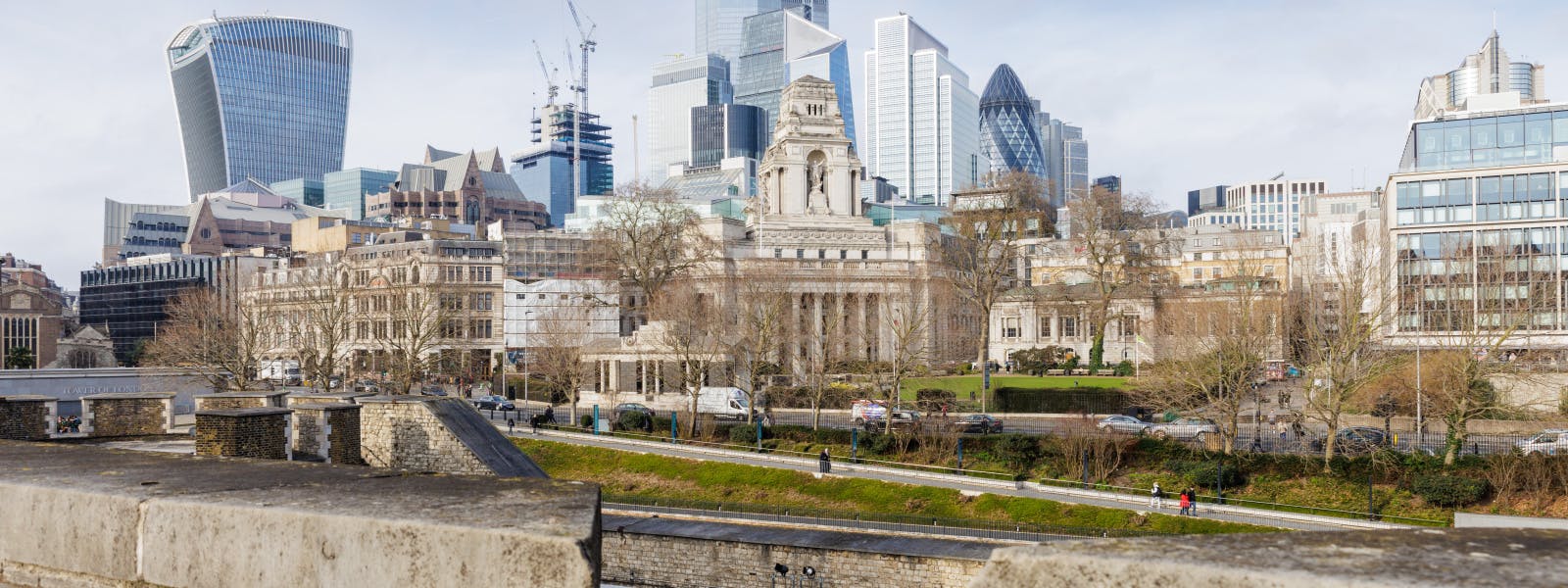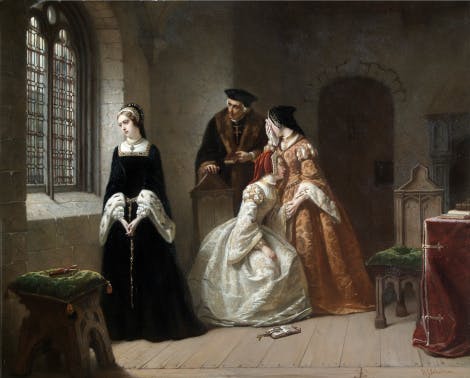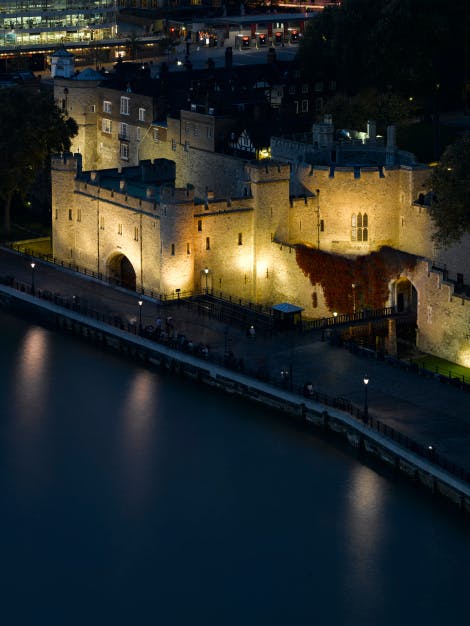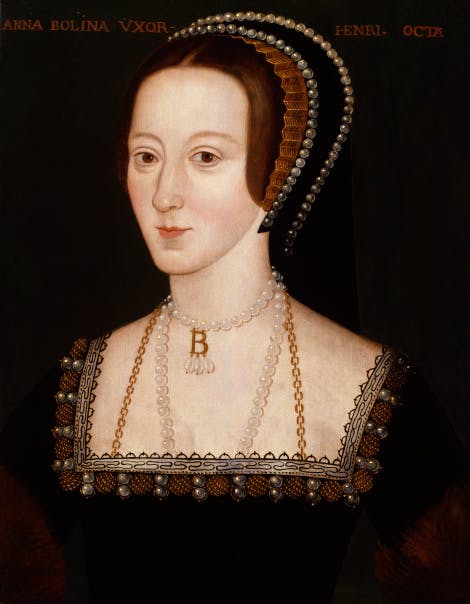
The site of public executions near the Tower of London
Skip the event ticket details and go to event summary.
When
DailyWhere
The Tower Hill Execution Memorial is located in Trinity Square Gardens, opposite the Tower of London.
Important information
A Tower of London ticket is not required to visit the Tower Hill Execution Memorial.
Trinity Square Gardens is located across a busy road near Tower Hill Underground Station. Please take extra care when travelling between the Tower and the memorial.
Free
Complete your visit to the Tower of London at the Tower Hill Memorial, in what is now Trinity Square Gardens. Here, an estimated 125 people were executed – including many prisoners of the Tower. The memorial names 29 of those who died on this site and is roughly where the executioner’s scaffold stood.
The history of executions on Tower Hill
Despite the Tower's infamous reputation, very few people were executed inside the Tower of London, on Tower Green. The privacy of an execution within the Tower was a privilege usually reserved for those of royal or noble rank. Fifteen men convicted of desertion or espionage were also executed within the Tower's walls.
Instead, most condemned prisoners met their fate in large, public spectacles on Tower Hill. Tower Hill formed part of the Tower Liberty, an area outside the fortress controlled by the Constable of the Tower. Executions performed here were brutal displays of state power – as much about threatening the living as punishing the soon-to-be-dead.
Historians estimate that around 125 people were executed on Tower Hill.
Most of those executed were prisoners from the Tower – usually men of high status or those charged with crimes against the monarch. The crimes people were executed for included everything from plotting a rebellion to rioting, murder, and forging counterfeit coins. Though most were beheaded, some people were hanged, disembowelled, or even burnt at the stake.
Who was executed on Tower Hill?
The names listed on the Tower Hill memorial include some of the most powerful people in the country. These notable men – including rebel conspirators, religious martyrs and ambitious courtiers swept up in royal plots – met their end on Tower Hill.
Only two women are known to have been executed on Tower Hill – Charlotte Gardiner and Mary Roberts, who, along with William McDonald, were sentenced to death by hanging for participating in the Gordon Riots in 1780.
The Peasants’ Revolt: The earliest Tower Hill executions
The earliest beheadings recorded on the Tower Hill monument took place in 1381. Executions did take place outside the Tower before this date; however, their exact locations are not confirmed. Unlike later executions, the deaths in 1381 were part of the medieval ‘Peasants’ Revolt’, a rebellion which sought to remove and punish the noblemen who ruled England on behalf of 14-year-old King Richard II.
The rebels breached the Tower gates, dragged Simon Sudbury, Archbishop of Canterbury, and Robert Hales, the Treasurer, from the Chapel of St John and beheaded them on Tower Hill. Sudbury’s head was mounted on London Bridge.
The first official execution at Tower Hill took place in 1388 with the death of Sir Simon de Burley. Over the next 400 years, many famous figures met their fate in the shadow of the Tower of London.

Image: The Tower Hill Exection Memorial. © Francis Mullan (WMR-60456)

Image: Sir Thomas More, painted in the early 17th century, based on a work of 1527. © National Portrait Gallery, London
Sir Thomas More
Executed 6 July 1535
Thomas More was an English lawyer, diplomat, and Lord High Chancellor of England. He was imprisoned in the Tower of London by Henry VIII for refusing to recognise the King as the Supreme Head of the Church of England. In his final speech, More declared himself 'the King’s good servant but God’s first'. He was beheaded on Tower Hill.
George Boleyn, Viscount Rochford
Executed 17 May 1536
George Boleyn was a courtier, nobleman and the elder brother of Henry VIII’s second Queen, Anne Boleyn. George was accused by Anne’s enemies at court of committing adultery and incest with his sister. He was found guilty and beheaded on Tower Hill. As a former Queen, Anne was granted a more private execution inside the fortress on Tower Green two days later.
Thomas Cromwell, Earl of Essex
Executed 28 July 1540
Thomas Cromwell was Henry VIII’s chief minister and was once one of the most powerful men in England. Despite earning the King’s forgiveness for arranging a misjudged marriage alliance with Henry’s fourth Queen, Anne of Cleves, Cromwell’s enemies convinced the King that his minister was conspiring against him. Although Cromwell pleaded for ‘mercy, mercy, mercy’ in a letter to Henry, he was beheaded on Tower Hill.
Lord Guildford Dudley
Executed 12 February 1554
Dudley was husband to Lady Jane Grey, the so-called ‘Nine Day Queen’. Dudley’s marriage to Jane was arranged by their parents, who hoped to claim the English throne after the death of Edward VI. However, this claim was overthrown by Mary I, daughter of Katherine of Aragon and Henry VIII. Dudley and Jane were imprisoned separately at the Tower before being put on trial and sentenced to death – Dudley on Tower Hill and Jane on Tower Green.
Simon Fraser, 11th Lord Lovat
Executed 9 April 1747
A Scottish clan leader and Jacobite, Fraser worked as a double agent in support of a Stuart restoration against the ruling Hanoverian 'Georgian' royal family. His execution was so crowded that a viewing stand collapsed and killed several people. Fraser was the last person in Britain to be executed by public beheading.

Image: Thomas Cromwell, Earl of Essex, painted in the early 17th century, based on a work of 1532-1533. © National Portrait Gallery, London
The end of Tower Hill executions
By the 1750s, most public executions had moved across London to the Tyburn Gallows (near Marble Arch). The last executions at Tower Hill took place in 1780 with the hanging of three people who took part in the Gordon Riots.
To commemorate the tragic history and in many cases the martyrdom of those who for their faith country and ideals staked their lives and lost
Inscription on the Tower Hill Execution Site Memorial
Explore what's on

- Things to see
Tower Green and Scaffold site
Walk in the footsteps of those condemned to execution at the Tower of London on Tower Green and the Scaffold Site.
- Open
- Tower of London
- Included in palace admission (Members go free)

- Things to see
Imprisonment at the Tower exhibition
Learn why people ended up as prisoners in the Tower of London, in the very rooms where some of them were held.
- Open
- Tower of London
- Included in palace admission (Members go free)

- Things to see
The Tower Moat
The Tower Moat is a unique and evolving space with a long history.
-
Closed
- Tower of London
- Included in palace admission (Members go free)
Browse more history and stories

The Tower of London as a prison
The Tower is known as an infamous prison, but it wasn't built to be one

The story of the Tower of London
Iconic fortress, royal palace and infamous prison.

Anne Boleyn
How did Anne Boleyn become queen and why did Henry VIII execute her?
Shop online

Tower of London Navy Raven Sweatshirt
Inspired by the infamous ravens of the Tower of London, this sweatshirt will keep you warm on those chilly days.
£38.00

Shop Six Wives of Henry VIII
'Divorced, Beheaded, Died: Divorced, Beheaded, Survived' - this best selling range is as colourful as it is informative.
From £15

Shop Ravens
It is said that if the six ravens were ever to leave the Tower of London then the Tower and the kingdom will fall. Naturally, to preserve the kingdom six ravens are kept to live and protect the Tower of London.
From £2.50

